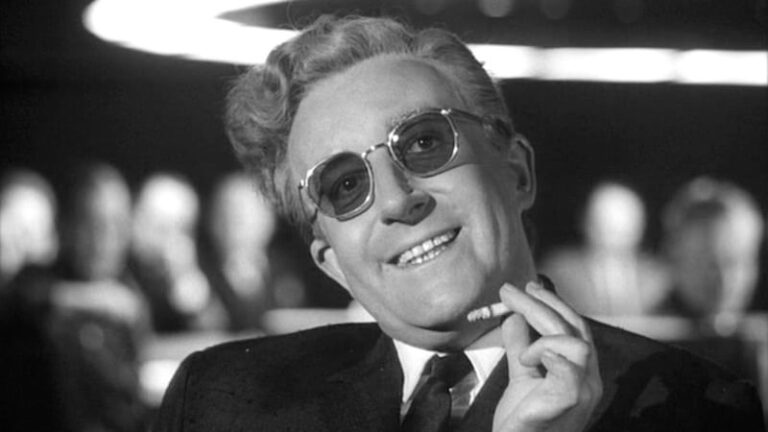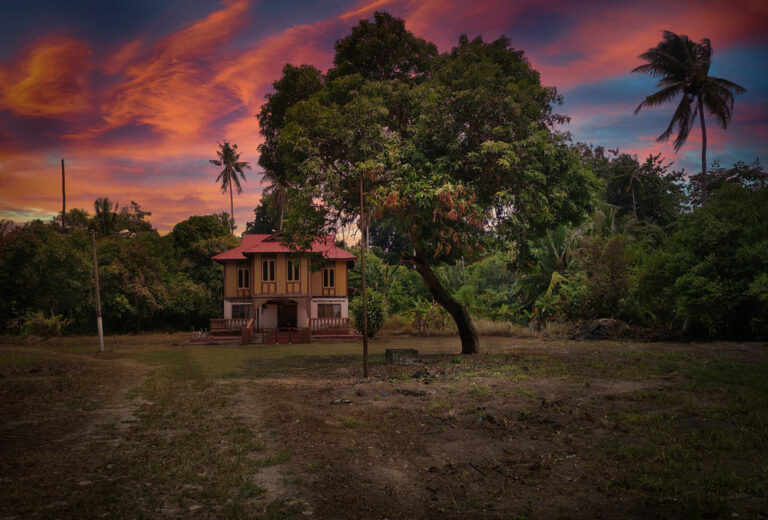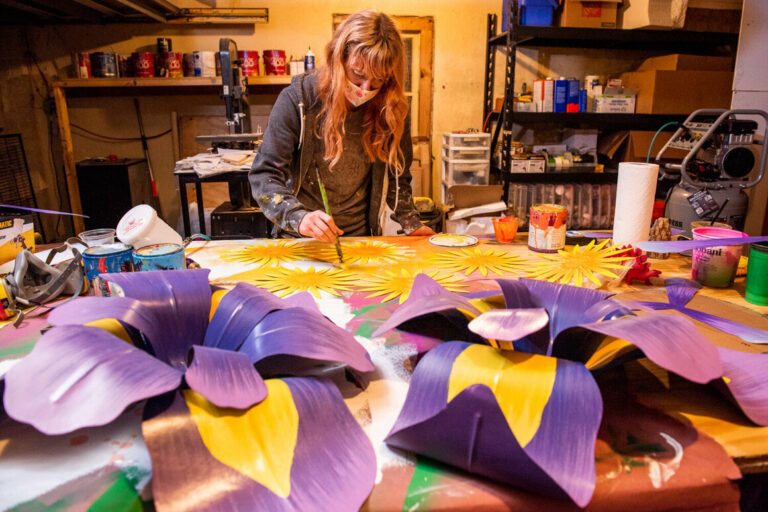Michael Mann: Master of Cool Colors
Michael Mann is the kind of director who holds complete films in his head before he begins making them. He is a rare breed of an auteur who has everything to do with everything. In the scope of his filmography, his producing and screenwriting are no less significant than his directing. He ceaselessly communicates the blueprint he envisions for each department — hyper-specific costuming, makeup, background direction, prop placement, blocking, lighting, shooting, production design, et al.
But above everything, Mann, like a painter, is most fascinated by color.
His calculated use of color across his career has rendered him an icon in the field. While some filmmakers use color solely to achieve style, Mann uses it for substance as much as style. Do not let anyone fool you into thinking his color schemes are empty just because he makes “dadcore” art cinema. Mann manipulates color to elicit psychological and emotional reactions, establish tone, convey aspects of character, develop arcs in the narrative, express theme, and magnetize viewers to particular details, among other things.
He has been especially influential in the way he employs cool colors, like shades of blue, green, and purple. It makes sense that he is drawn to conventionally masculine color palettes laden with blues and greens. He writes about crime, cruelty, violence, love, death, sex, loneliness, loss, identity, and existentialism through the lens of traditionally masculine men situated within tense, moody, and often urban stories. Mann is so heavily associated with vibrant blue-green hues that even the cover art on the many scholarly texts written on him follow suit, as do most of the posters for his films.
To illustrate how Mann employs cool colors to tremendous effect, I’ve gone through his filmography, chosen twelve shots across ten features, and analyzed them using color theory, which I will explain in more detail as I unpack each shot. The Jericho Mile, The Keep, and LA Takedown were left out for lack of high definition copies. Without further ado, I invite you to plunge into the cool, electric color of Michael Mann.
Thief (1981)
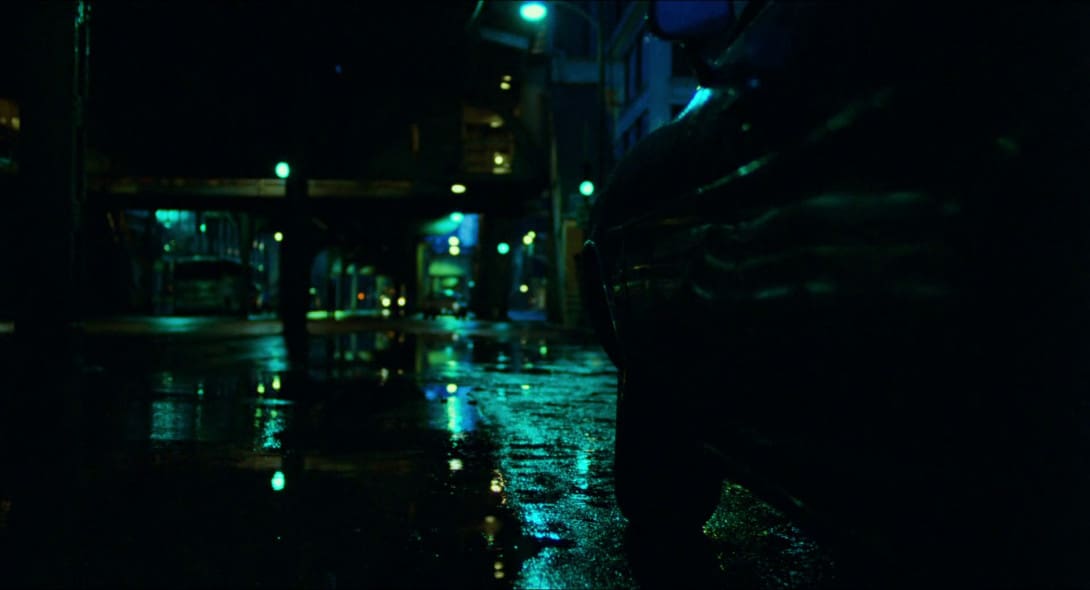
Of all of Michael Mann’s neon nocturnal odysseys, Thief might hold the title for best cinematography, courtesy of Donald E. Thorin. If nothing else, it’s tied with Miami Vice for the Most Vivid Colors Award. As a result, Thief wears many hats. For one, it’s Mann’s first theatrically released film. For another, it’s the first shot on this list.
This simple street shot is as adept at summing up Mann as an image could be. It comes in the first seven minutes and kicks off a dialogue-free descent into the night layered with loud, ethereal synth pads (one can hear where the Safdie brothers found inspiration). The car taking up a third of the screen is the soon-to-be getaway car for Frank (James Caan) and Barry (Jim Belushi). The depth of the image compounded with the reflectiveness of the water and the blotches of light make it seem like we are about to calmly escape with them into a technicolor tunnel.
The image is lavish in its long, wide lenses, like a gold bar made of neon. That’s due to Mann’s methods. He reportedly ordered truckloads of water to hose down the streets of Chicago in an effort to “recreate the perspective of a Pissarro.” It was a stroke of impressionist genius. The blotted blue-green lighting looks like electricity surrounded in ink, sharp hues highly saturated and contrasted with the darkness.
In color theory, associative color schemes are those in which specific colors are used throughout the film to convey certain moods or themes. Green often represents an ominous mood, corruption/crime, danger, or darkness, all of which are either felt or foreshadowed in the luminous icy shades that dominate the image. Later, we learn that the villain of Thief owns two businesses with neon green signs, one of which is called the Green Mill Cocktail Lounge. The blues are deeper and more subtle. Peppered in, they contribute to the darkness and work with the dappled greens to establish the overarching coldness of the film.
This is also an example of what’s known as an analogous color scheme, which is defined by the prominent use of three colors that are next to each other on the color wheel, in this case the focal green and the blue and yellow that flank it. However, it’s not purely analogous. The single red pinprick in the background is louder than its size. One wonders if Mann really wanted it there, given that he outwardly detests the color, especially when it interrupts the cools.
Manhunter (1986)
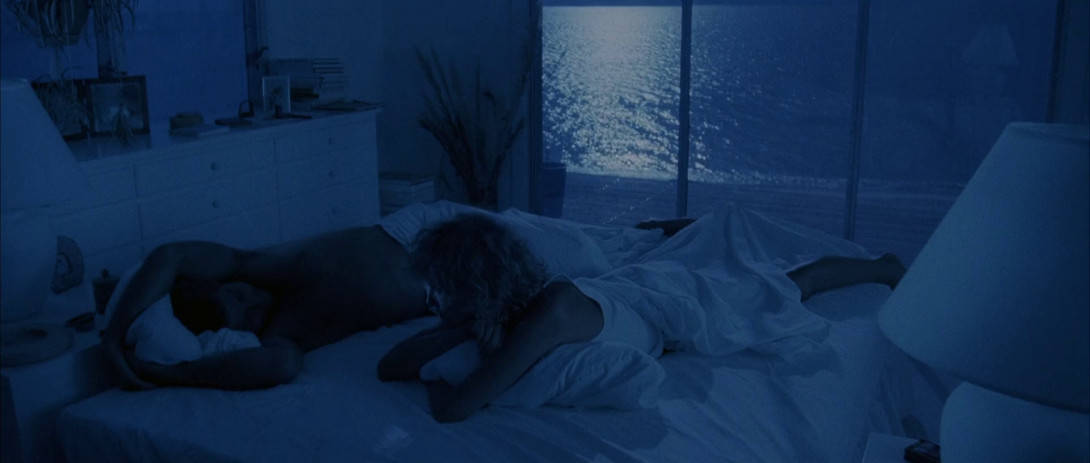
Manhunter is one of two films on this list with two shots. Of course, one could compile a long list of cool-colored shots for each individual film, but in the case of Manhunter, the two shots chosen illustrate Mann’s ability to use similar monochromatic color schemes to express different moods that are equally pervasive across the film. Monochromatic schemes are those made up of shades of a single color.
The first of these comes just before Will (William Petersen) asks his wife Molly (Kim Greist) whether she thinks he should return to Atlanta to help track down the killer. Here, blue represents melancholy and forewarns viewers of the couple’s imminent isolation from one another (as does their body language) once he takes the case.
This shot also checks off a directorial trademark for Mann, who is known for portraying characters next to — often looking out of — floor-to-ceiling windows that overlook an expansive ocean. The deep nautical hues blend almost flawlessly with the low-value moonlight lathering the characters inside, and together they create a sensual mood, much like the blue, erotic monochromatic fantasies of Alice in Eyes Wide Shut, except this sensuality is less shadowy and more faithful.
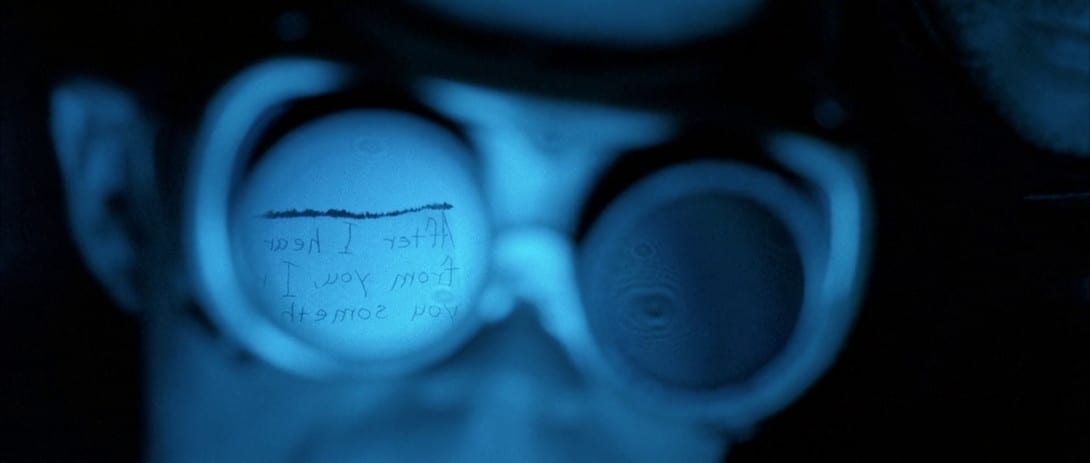
In the second shot from Manhunter, we see a man examining the edge of a piece of paper through a much brighter blue light cast by an offscreen laser. Here, the frosty blue represents a cold, cerebral tone — an examiner sharp in his craft, detectives performing mental gymnastics, and a meticulous villain sneakily communicating with his genius serial killer role model, Hannibal Lecter, through the note in the lens. Cinematographer Dante Spinotti knows how to pull off the perfect monochrome color scheme.
The Last of the Mohicans (1992)
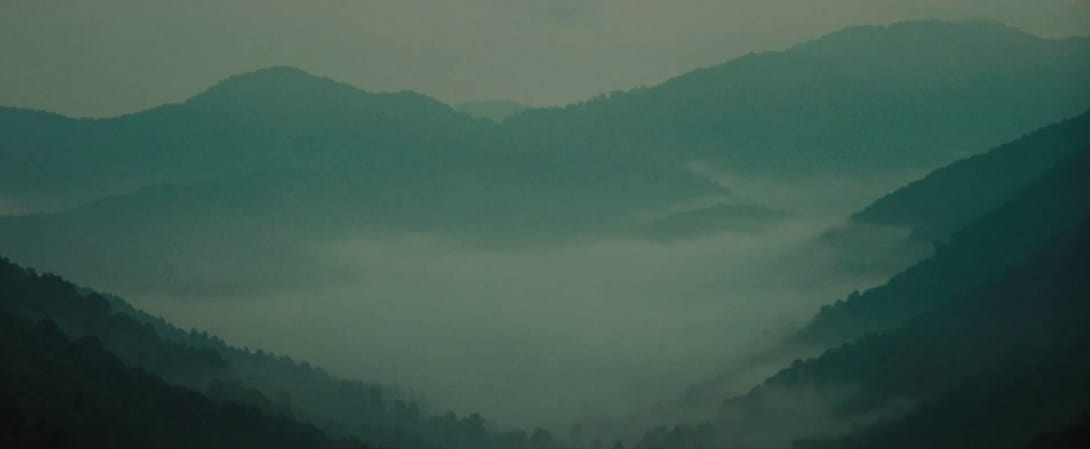
Every Mann movie is adorned with its fair share of sweeping landscape shots, but The Last of the Mohicans is unique. Spinotti returns to plunge viewers into the vast, untouched landscapes of upstate New York in 1757 during the French and Indian War. In doing so, the period piece offers a rare look away from the radiant modernism of most of Mann’s work.
The shot in question is the opening. It initiates the forty-second period of slow panning across the forested mountains at dawn. The colors are beautiful and a bit curious, as if they loom over the image. Overall, it has a strong cyan tint that leans toward green over blue, which makes it an associative color scheme given the heavy presence of nature that it both depicts and represents. The center billows white fog while the mountains on its left and right form a grey-to-black gradient. Mann once said, “Adding white always makes color burn a little.” He picked the idea up from a 20th-century British painter and employs it here brilliantly. The dark cyan is ablaze with enchantment due to the white in the middle. It represents a danger to come.
The faintest complementary hues of orange-yellow light from the East horizon make it burn that much more and add layers of exoticism to the forest and the time period. It’s difficult to label this shot. One could argue that the faintness of sunlight is baked into the cool colors, making it a monochromatic dark cyan color scheme. Or one could argue that the hues from sunrise are distinct enough to call it a complementary color scheme, which is when an image is defined by two colors that sit across from each other on the color wheel (blue-green and orange-yellow here). And perhaps that’s what the color scheme best represents: complexity.
In making The Last of the Mohicans, Mann said he wanted to “take our understanding of those cultures […] and use our contemporary perspective as a tool to construct a more intense experience of realistically complex people in a complex time.” No matter what one calls the color scheme, the image does a terrific job of setting up the romantic, devastating tone of the tale to come while introducing viewers to the setting at large.
Heat (1995)
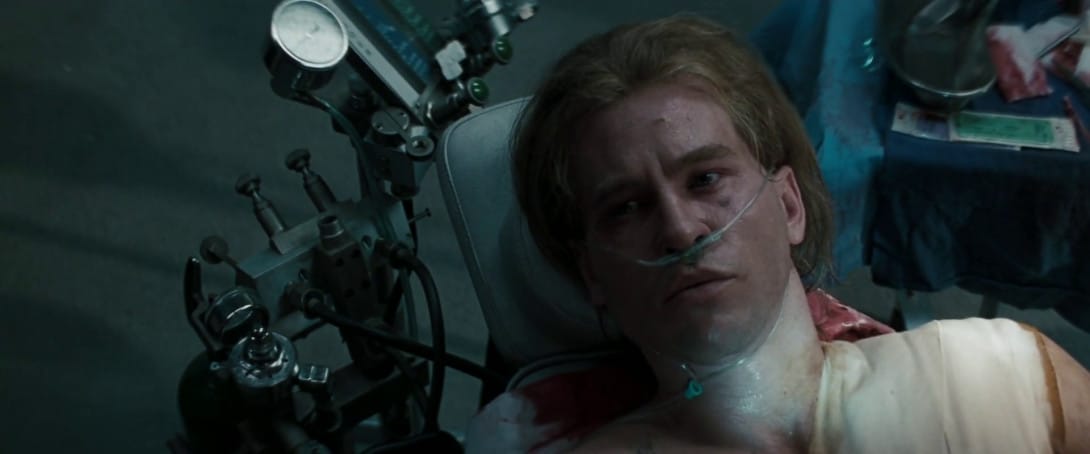
This is by far the least aesthetically pleasing shot on the list, but it still comes from the almighty Mann-Spinotti duo. I chose it to exemplify Mann’s scrupulous, associative use of cool colors in duller shots that do not get as much attention. The entirety of Heat is a Mann masterclass on the topic of detail. For example, he demanded “specially designed wire-brushed hangers” be used in the film because he liked the way they looked and sounded when they clashed against each other.
In this shot, we witness that diligence through the supplies surrounding Chris (Val Kilmer). Altogether, it’s not a very colorful shot. The most prominent colors are in the top right corner. Blue hues win the day. Surrounded mostly by metal and a concrete grey floor, they take on a metallic tone and make for a lifeless mood. Otherwise, two things are obvious. The red is blood, and Chris is in a poor state of health. That’s where the cool colored ingredients come in. Mann picked an oxygen machine with emerald knobs and blue accentuation. He chose a seafoam green oxygen cord that matches the packaging for the bandage material on the table, which is covered in a navy and cornflower blue that transmit a pensive melancholy once again. In a shot like this, green represents vitality and healing, as it often does. Think of the budding life that springs forth from fresh vegetation and the solid green that colors the cross symbol for pharmacies.
The Insider (1999)
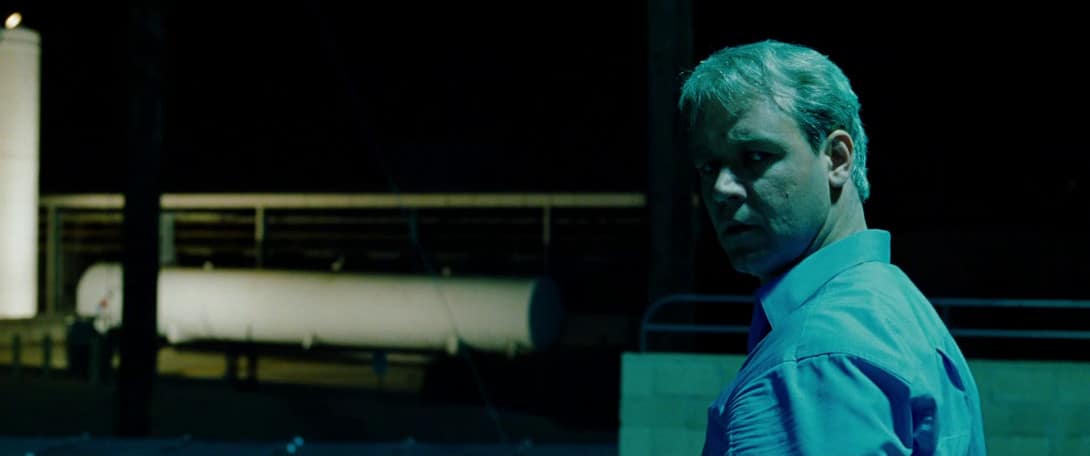
Mann’s most universally acclaimed picture, The Insider is soaked in vivid blue-green two-tones contrasted with pitch-black shadow (thanks once again to Spinotti). It’s a procedural, 157-minute chiaroscuro thrill ride. According to Mann scholar Steven Rybin, “sea-blue tonalities […] form a stylistic precedent for the way Mann often links blue and gray color schemes to the existential crises of his characters,” with Jeffrey Wigand (Russel Crowe) chief among Mann’s existentially frayed men.
While hitting a few balls at the driving range to knock off some steam, Wigand realizes he is being followed by a man who is by no means trying to conceal himself. We see Wigand staring him down with a perplexed concern. The elaborate lighting set-up off-screen paints Wigand’s silvery hair and pale skin in a fluorescent Tiffany blue that bleeds onto the grey wall behind him and looks more like a muted green next to his sky-blue button-down. The bluer hues convey the seclusion and depression weighing down Wigand. Working with the shadows, they also represent his unfolding transparency, which ironically digs his situational hole deeper. (Mann once said, “I like the truth-feeling I receive when there’s very little light on the actors’ faces.”)
The greener tints indicate his confusion and the greater mystery at hand. Who is following him? What are they going to do? When are they going to stop? The greens could also be read as a sign of protection, which is a common color theory reading of green tones that veer more toward aqua. What we do not see is the man staring right back at Wigand unflinchingly, as if to threaten him. However, we do see the man thematically represented in the white tanker unit in the background, as if it’s reflecting his presence. In Mann’s films, white regularly represents institutions, whether they are the just type led by Will in Manhunter or the corrupt kind trying to instill fear for the sake of profit in The Insider.
Wigand finds himself targeted by institutions that seek to destroy him and his credibility in the public eye despite trying to do the right thing. His tumultuous journey is laden with lose-lose situations, much like this one, which presents him with the option of minding his own business and being stalked or confronting the man he’s almost sure was sent to harm him. The sour existential dread is written in the colors as much as it is the expression on his face. What has he done? What has his life become?
Ali (2001)
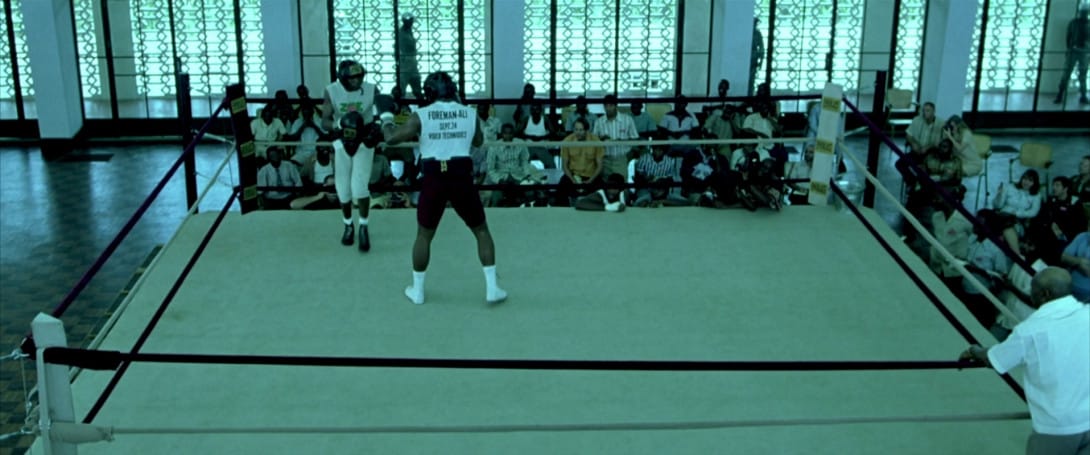
Ali is one of Mann’s less-appreciated films, but calling it “maligned” would be far from accurate. As Mann’s first foray into digital camerawork and his first screenwriting effort with more than one writing partner, Ali does feel a bit shakier than his previous work. But it’s considerably better than some of his late work and, ultimately, a damn impressive film, especially when it comes to the cinematography, which sprawls out across the color spectrum. This is the only Mann film graced by the presence of all-time director of photography Emmanuel Lubezki (The Tree of Life, Children of Men), and his presence is certainly felt.
Here, we have two shots in the same setting (though not the same sequence) that illustrate one of Mann’s most common techniques: extreme blue-green filters. Both shots capture George Foreman (played by actual heavyweight boxing champion Charles Shufford) training for his fight against Muhammad Ali (Will Smith).
The first shot, above, is drenched in turquoise, which evokes feelings and themes triggered by both blue and green depending on what surface the color sits on. In this context, the strength, stability, and gravity of blue is felt as strongly as themes of protection and defense elicited by green. Foreman is preparing for a historic fight with the greatest boxer of all time and he needs to be a tank when he enters the ring. The color filter is so strong that the image is almost monochromatic. The orange is the only color that survives the filter with some trace of what it might have looked like otherwise, so the color palette is complementary.
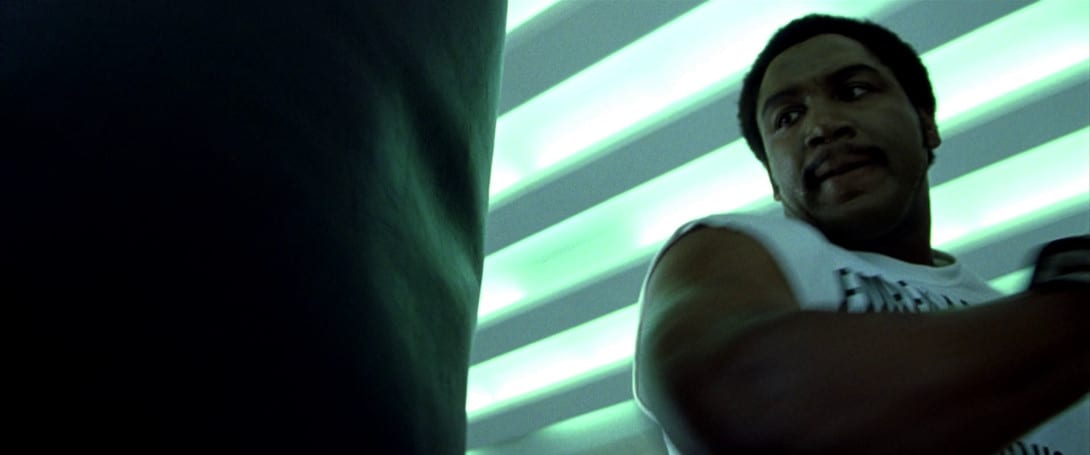
The second image uses the same tint to dive deeper into characterizing Foreman as said tank. The effulgent rays of light above him — the same that soak the image of the ring — are likely white, but through Mann’s filter and the context of the image, they become a sinister green, framing Foreman as the antagonist from Ali’s perspective. Half of the image is taken up by the punching bag, which is a stark black that you better believe conveys aggression and power when it sits next to Big George. The fact that he’s loading up a punch that could puncture steel also contributes to his intimidating presence. Mann uses similar blue-green filter techniques to incredible effect when framing the villain of Thief.
Collateral (2004)
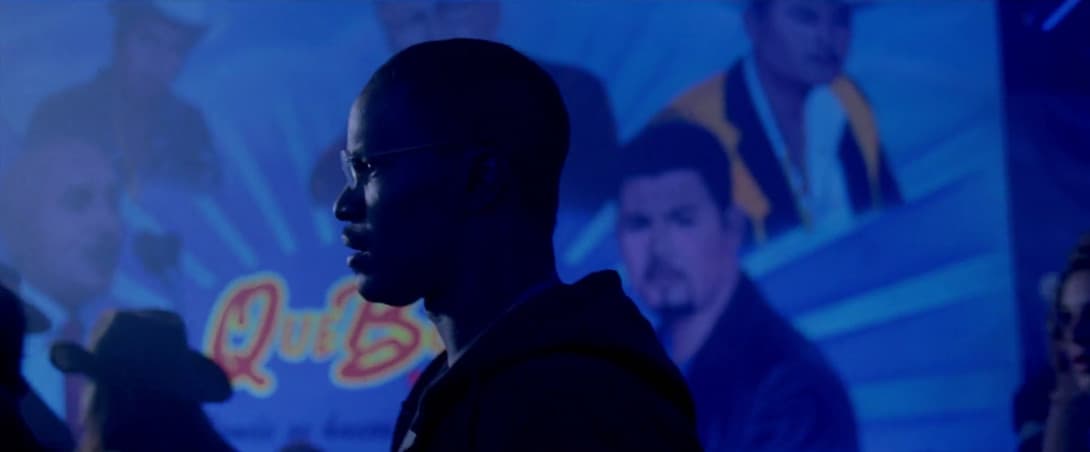
After The Insider and Ali, Mann enlisted cinematographers Dion Beebe and Paul Cameron and returned to neo-noir storytelling with Collateral. When the film came out, Mann said in an interview, “LA, especially at night, has the deep purple glow of possibility. Anything can happen.” The quote sketches the tone of Collateral perfectly in as little words as possible. And the bursting neon shot of Max the taxi driver (Jamie Foxx) walking apprehensively into the club captures the heart of the statement just as succinctly.
First off, we’re whacked with the deep purple glow of possibility. But the purple edges more toward blue, landing somewhere between a highly saturated violet and a phosphorescent sapphire. In the context of the narrative, Vincent (Tom Cruise) has just sent Max into the club to meet with dangerous gangsters on his behalf. In other words, we have no idea what will happen next, so the evocation of possibility and open-endedness that defines Los Angeles for Mann is prevalent. The purplish hue also represents royalty and power. After all, Max has just waltzed into a villain’s dance palace, and the look on his face shows it.
This is the only image on the list that sufficiently meets the standards of a triadic color scheme. Triadic palettes consist of colors that triangulate on the color wheel (e.g. blue-red-yellow, purple-green-orange). The red and yellow hues of the Spanish script are vivacious up against the glowing wall. Red represents the violence and anger of the film, which act as a prominent duo of themes.
Max and Vincent have a tense, bitter relationship throughout — as hostages and their captors do — only sprinkled with brief moments of connection. In this case, the yellow contributes to the chaos of the triadic palette, representing caution and giving off a vibe of anxiety-ridden insecurity regarding what’s to come for Max. As a whole, the image distinguishes what makes Collateral such a different LA movie than Heat when it comes to color. Critic Mark Olsen phrases it wonderfully: “If the LA of Heat was crisp, almost photorealist in its high-gloss intensity, here the night-time cityscape is rendered with a watercolor density.”
Miami Vice (2006)
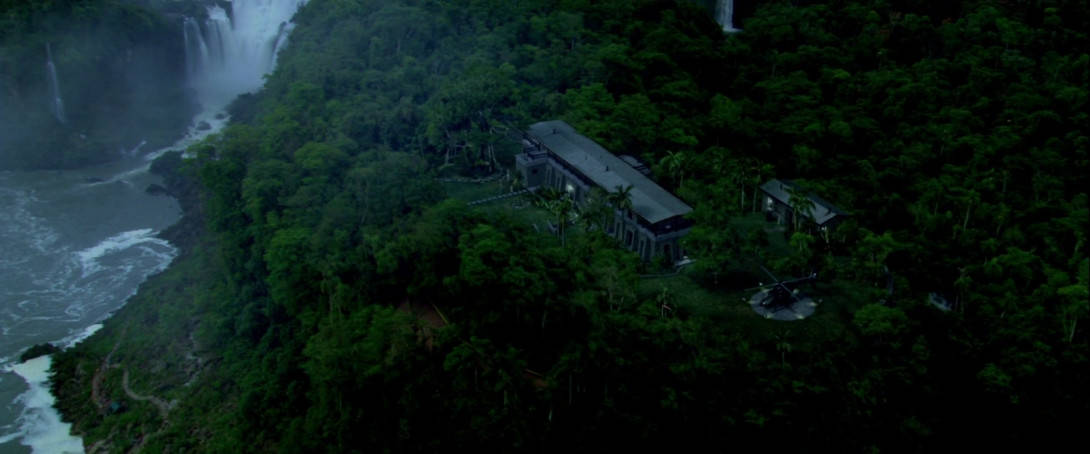
Submerged in jolting cool colors, Miami Vice is an electric romp around the Magic City chauffeured by an elite class of “go-fast boats,” private planes, and Beebe cinematography. But the wealthy villains of Miami Vice are not like those of Collateral or Thief. They’re much sillier, and, consequently, the film is hard to take seriously at times. The main villain lives in a jungle lair surrounded by waterfalls like sinkholes in the wild. However, this is still a Mann-quality film brimming with fervent cool-colored shots.
This aerial shot lands in the middle of the movie. We soar through the air behind another silver plane in one long single-take set to hammering, poorly chosen grunge metal music. At the end of the take, we arrive at the monochromatic shot pictured. One can catch traces of the sinkhole jungle through the waterfalls on the edge of the image, but not like in the landscape shots that precede it. That’s because this image is wholly focused on the extravagant wealth represented by the lush Sacramento green vegetation surrounding the mansion. The fullness of the jungle contributes to the feeling of prosperity and greed that the green elicits in the context of crime bosses, and the monochromatic aspect makes it feel all-consuming. Likewise, the dark green is an associative color that represents doom, danger, and corruption throughout the film.
Public Enemies (2009)
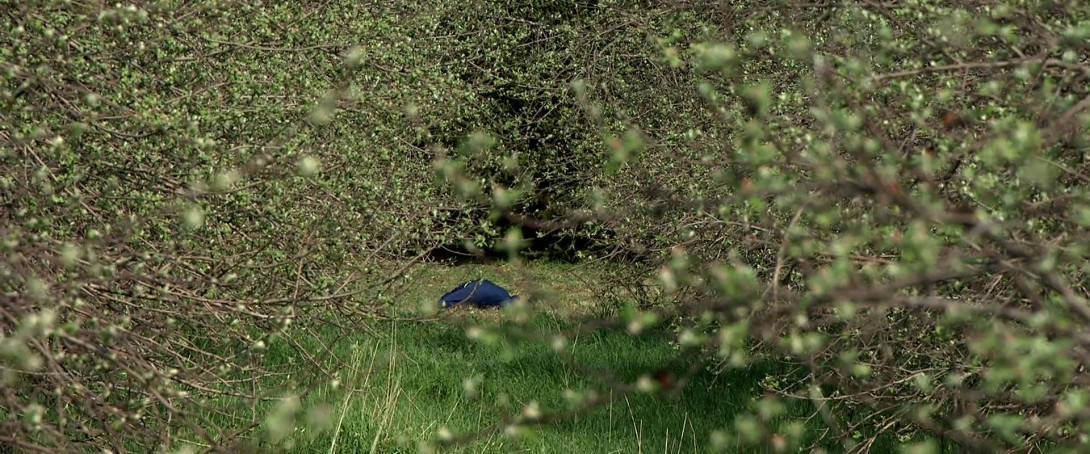
The brightest, most natural image of the bunch, this shot from Mann’s Public Enemies can be found in Melvin Purvis’s (Christian Bale) introductory scene. We see through his eyes. At first glance, one is captivated by the friendly, peaceful shades of green that are so rare in Mann’s films, especially those shot by Spinotti (this marks their fifth and most recent collaboration). Some are blotted and out of focus, while others are crisp and clear. It is an entirely welcoming shot if not for the man in the middle. The man is lying down because, well, he’s dead. The pursuant Purvis just shot him. Although, the image and the colors within are still primarily positive.
The lively, flamboyant greens represent the goodness and virtue of Purvis, whom we immediately know does not tolerate crime of any kind. The brightness of the greens in sunshine shows that he is a man who lives in broad daylight. He is a man with nothing to hide, unlike Pretty Boy Floyd (Channing Tatum), the criminal faceplanted at the opposite end of the orchard floor who is clothed in darkness, yet a rich darkness in navy.
The greens can also be associated with two of Purvis’s most essential tools: ambition and endurance. If not for them, he would never have caught John Dillinger (Johnny Depp), the infamous criminal who slipped through his grasp time and time again. The drastic difference in this shot from the others is the way it showcases Mann’s willingness to adapt throughout his career. He could’ve played into his legacy and thrown a soft blue-green filter on the lens, but instead he left it bare, letting the clarity, color, and texture of the image do a new kind of bidding for a new kind of character — one who sees clearly.
Blackhat (2015)
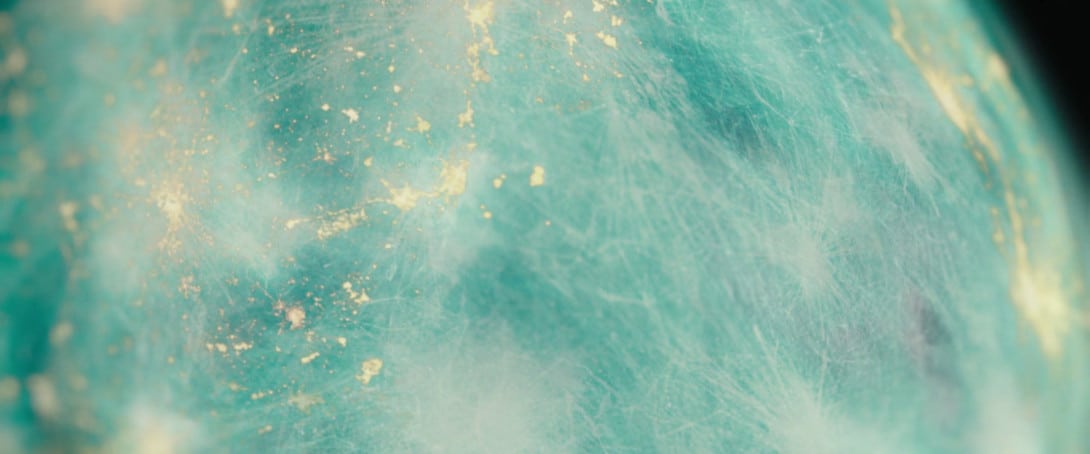
Like the staple Tiffany blue and turquoise pictured in the shots of The Insider and Ali, this splashy, blue-green hue from the beginning of Blackhat is opalescent and probably best described by one of those two titles. Like the mountain image from The Last of the Mohicans, this is the opening shot of the film. The image sets the viewer up for a globalist spy thriller set in a digitized world. Naturally, the cool tones of digital espionage fare well for Mann and his new cinematographer, Stuart Dryburgh. Every computer screen, phone screen, TV screen, and other device’s screen plays right into his favorite cool color schemes. If you rewound one second, the title would be scrawled across the orb, which is the Earth. But it does not come across that way.
If anything, it seems more like a spherical ice rink that could use a Zamboni. The cold, scratchy tracings of global communication look like skaters’ paths cut into the surface of the globe. Here, the faded characteristics of the image give a different character to the blue-green color, which gives off a foreboding, unwelcoming tonality while still coming across as alluring.
The orb also seems translucent. Translucent surfaces — like butter paper or foggy glass — let light through, but the shape on the other side is typically hard to make out. In a film where the truth is often skewed, Mann’s use of translucent coloration is a finely measured move that conveys a greater sense of premonition and dishonesty than was already felt. The jazzy marigold electricity gives the image a complementary color scheme and represents humanity, life, and energy. It creates a mood of excitement, and in the context of Mann’s filmography, it could be seen to represent the modernity that has permeated his career.



